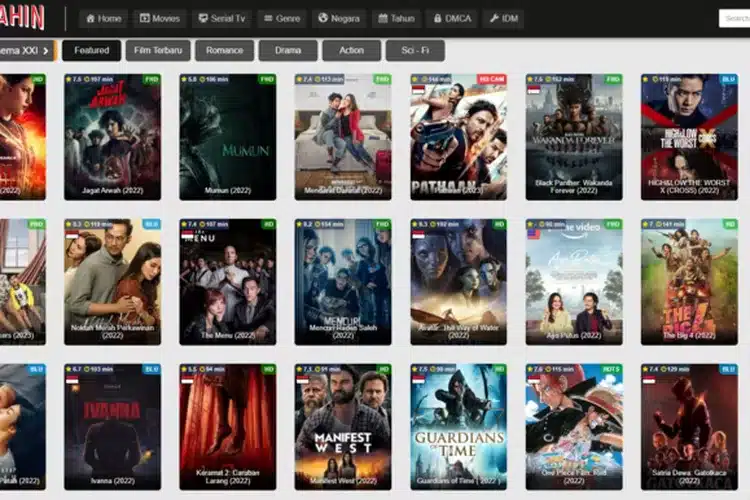Understanding Wepbound: A Guide to Modern Web Security

The internet is like a giant city full of information, places to shop, and ways to talk to friends. Just like in a real city, it’s important to stay safe online. We need ways to protect our information and make sure only the right people can access certain things. This is where the idea of Wepbound comes in. Think of Wepbound as a special set of rules and tools designed to keep our online world secure. It’s a way of making sure that when you use a website or an online service, your connection is safe and your information is protected.
In today’s world, we do almost everything online – from banking and shopping to learning and working. This makes web security more important than ever before. Bad actors, sometimes called hackers, are always trying to find ways to steal information or cause trouble. A strong Wepbound strategy helps organizations and individuals protect themselves from these threats. This article will explain what Wepbound means, why it’s important, the ideas behind it, its benefits, and the challenges in using it. We’ll explore how this concept helps create a safer online experience for everyone.
What is Wepbound?
So, what exactly is Wepbound? Imagine you have a secret clubhouse online, maybe a special website or an account where you keep important things. Wepbound is like the super-secure lock system for that clubhouse. It’s not just one single lock, but a whole approach or framework focused on making sure that only authorized people (like you and your trusted friends) can get in, and that everything inside stays safe.
Essentially, Wepbound refers to the strategies and technologies used to securely “bind” or connect a user or a device to a web-based resource or application. The main goal is to control access and protect data during online interactions. It’s about creating a secure pathway between you and the website or service you are using. This involves several key steps, like checking who you are, keeping your communication secret, and watching out for any suspicious activity.
Think about logging into your email. You type your username and password. That’s part of checking who you are. When you send an email, the service might scramble the message so nobody else can read it if they intercept it. That’s part of keeping it secret. The email company also watches for strange login attempts, like someone trying to guess your password many times from a faraway country. That’s part of watching out for trouble. Wepbound brings all these ideas together into a complete security plan for the web. It aims to build trust and confidence in our online activities by making them fundamentally more secure.
Learning from the Past: Why Strong Web Security Matters
To understand why comprehensive strategies like Wepbound are needed today, it helps to look back at how security has evolved. Early attempts at digital security sometimes had big weaknesses. A well-known example, although related to wireless networks rather than the web itself, is WEP (Wired Equivalent Privacy).
WEP was one of the first security methods used for Wi-Fi networks back in the late 1990s. The goal was to make wireless connections as private as wired ones. However, researchers soon discovered serious flaws in WEP. It used weak encryption methods that could be easily broken by hackers with the right tools, sometimes in just a few minutes. This meant that anyone nearby could potentially listen in on wireless traffic or gain unauthorized access to the network.
The failure of WEP taught the technology world some very important lessons:
- Security needs to be strong from the start: Weak security gives a false sense of safety and can be worse than no security at all.
- Complexity isn’t always security: WEP was complex in some ways, but fundamentally flawed. True security relies on sound mathematical principles.
- Security must evolve: As technology advances, so do the methods used by attackers. Security measures need constant review and updating.
These lessons learned from WEP and other early security challenges highlighted the need for much stronger, multi-layered approaches to security everywhere, especially on the web where so much sensitive activity takes place. This led to the development of better protocols (like WPA2 and WPA3 for Wi-Fi) and comprehensive security frameworks for web interactions – the kind of robust thinking embodied in the Wepbound concept. We need security that verifies identity, protects data secrecy, and constantly monitors for threats, because the risks are simply too high otherwise.
The Principles of Wepbound
The Wepbound approach isn’t based on just one thing; it relies on several key ideas working together. These principles form the foundation of a secure online connection. Let’s break them down:
1. Authentication: Proving Who You Are
Authentication is all about identity. How does a website or online service know that you are really you? This is the first step in any secure interaction. Weak authentication is like leaving your front door unlocked. Strong authentication is crucial for a Wepbound strategy.
- What it is: Authentication is the process of verifying the identity of a user, device, or system trying to access a resource.
- Why it matters: Without proper authentication, anyone could pretend to be someone else and gain access to private information or accounts.
- Common Methods:
- Something you know: Passwords, PINs, security questions. It’s important to use strong, unique passwords!
- Something you have: A physical token, a key fob, or your smartphone (receiving a code via SMS or an authenticator app).
- Something you are: Biometrics like fingerprint scans, facial recognition, or iris scans.
- Multi-Factor Authentication (MFA): This is a very important concept in modern security. MFA requires two or more different methods of authentication (e.g., a password plus a code from your phone). This makes it much harder for attackers because they would need to steal more than just your password. Implementing MFA is a core part of strong Wepbound practices. For example, many banks now require MFA when you log in online. You enter your password (something you know) and then a code sent to your phone (something you have).
2. Encryption: Keeping Secrets Secret
Once your identity is confirmed, the next step is to protect the information being exchanged. Encryption is like writing your messages in a secret code that only you and the intended recipient can understand.
- What it is: Encryption is the process of scrambling data so that it becomes unreadable to anyone who doesn’t have the special “key” to unscramble it.
- Why it matters: When you send information over the internet (like your credit card number when shopping online, or your password when logging in), it travels through many different computers. Encryption prevents anyone snooping on the network from reading your private data.
- Where it’s used:
- Data in Transit: This protects data as it travels across the internet. The most common example is HTTPS (the ‘s’ stands for secure). When you see a padlock icon in your browser’s address bar, it means your connection to that website is encrypted using protocols like TLS (Transport Layer Security). This is fundamental to Wepbound.
- Data at Rest: This involves encrypting data that is stored on servers, databases, laptops, or phones. If a device is stolen or a server is breached, encrypted data remains unreadable without the key.
- How it works (simply): Imagine a special box with a unique lock. You put your message (data) inside, lock it, and send it. Only the person with the matching key can open the box and read the message. Encryption algorithms are like these highly complex locks and keys, but digital.
3. Monitoring and Management: Watching for Trouble
Security isn’t something you set up once and forget about. It needs constant attention. Monitoring and management involve keeping an eye on the systems and actively managing security measures.
- What it is: This involves continuously observing network traffic, system logs, and access patterns to detect suspicious activity, potential threats, or policy violations. It also includes managing security settings, updating software, and responding to incidents.
- Why it matters: Attackers are always trying new tactics. Monitoring helps detect attacks early, often before major damage is done. Good management ensures that security tools are working correctly and are kept up-to-date against the latest threats.
- Key Activities:
- Logging: Keeping detailed records of who accessed what, when, and from where. These logs are essential for investigating security incidents.
- Intrusion Detection Systems (IDS) and Intrusion Prevention Systems (IPS): These tools monitor network traffic for known attack patterns or suspicious behavior. An IDS alerts administrators, while an IPS can automatically take action to block the threat.
- Security Audits: Regularly reviewing security configurations, policies, and logs to identify weaknesses or areas for improvement.
- Patch Management: Keeping all software (operating systems, browsers, applications) updated with the latest security fixes. Many attacks exploit known vulnerabilities in outdated software.
- Access Management: Regularly reviewing who has access to what resources and removing permissions that are no longer needed (the principle of least privilege).
These three principles – Authentication, Encryption, and Monitoring/Management – work together synergistically. Strong authentication ensures only the right people get in, encryption protects their communications, and continuous monitoring helps catch anything that slips through or new threats that emerge. A solid Wepbound strategy effectively integrates all three.
Advantages of Wepbound Strategies
Implementing a robust Wepbound framework brings significant benefits to both organizations and their users. It’s not just about preventing bad things; it’s also about enabling good things in a safe environment.
Enhanced Security
This is the most obvious and crucial advantage. By focusing on strong authentication, encryption, and continuous monitoring, Wepbound strategies significantly reduce the risk of various cyber threats.
- Protection Against Data Breaches: Strong authentication and encryption make it much harder for attackers to steal sensitive data like customer information, financial records, or intellectual property. A 2023 report by IBM found that the average cost of a data breach reached $4.45 million globally, highlighting the financial importance of prevention.
- Prevention of Unauthorized Access: Multi-factor authentication and careful access management ensure that only authorized individuals can access specific resources, preventing internal and external threats.
- Reduced Risk of Account Takeover: By making it harder to guess or steal passwords and requiring additional verification steps (MFA), Wepbound helps protect user accounts from being hijacked.
- Mitigation of Malware and Phishing: While not a direct anti-malware tool, secure authentication and encrypted connections can make users less vulnerable to certain types of attacks, especially those that rely on stolen credentials or intercepting traffic. Monitoring systems can also help detect malware activity sooner.
Compliance with Regulations
Many industries and regions have strict laws and regulations regarding data privacy and security. Implementing Wepbound principles helps organizations meet these requirements.
- Meeting Legal Obligations: Regulations like the GDPR (General Data Protection Regulation) in Europe, HIPAA (Health Insurance Portability and Accountability Act) in the US healthcare sector, CCPA (California Consumer Privacy Act), and others mandate strong security measures to protect personal data. Wepbound strategies directly address many of these requirements, such as access controls, encryption, and activity logging.
- Avoiding Heavy Fines: Failure to comply with these regulations can result in substantial financial penalties, sometimes reaching millions of dollars or a percentage of global revenue. Proper security implementation is a necessary cost of doing business.
- Building Trust and Reputation: Demonstrating a commitment to security and compliance builds trust with customers, partners, and regulators. A strong security posture can be a competitive differentiator. Customers are more likely to trust businesses that take their data protection seriously.
Improved User Experience
While it might seem like extra security steps could frustrate users, a well-designed Wepbound strategy can actually improve the overall user experience in the long run.
- Increased Confidence: Users feel safer knowing their data and accounts are protected. This confidence encourages them to engage more fully with online services.
- Reduced Friction (with smart implementation): Modern authentication methods like passwordless logins (using biometrics or security keys) or well-implemented Single Sign-On (SSO) can actually be faster and more convenient than managing dozens of complex passwords, while still being highly secure. SSO allows users to log in once to access multiple related services.
- Fewer Security Incidents: Preventing breaches and account takeovers means users avoid the significant stress, hassle, and potential financial loss associated with cleaning up after a security incident. A stable, secure system is ultimately easier to use than one constantly under attack or recovering from one.
- Personalization and Trust: Secure authentication allows services to reliably know who the user is, enabling safe personalized experiences without compromising privacy when done correctly.
By strengthening security, ensuring compliance, and thoughtfully improving the user journey, Wepbound strategies offer compelling advantages in today’s digital landscape.
Challenges Associated with Wepbound
While the benefits of Wepbound are clear, implementing and maintaining such strategies isn’t always easy. Organizations face several hurdles that need to be carefully managed.
Complexity of Implementation
Setting up a comprehensive security framework that covers authentication, encryption, and monitoring across various web applications and services can be technically challenging and resource-intensive.
- Integration Issues: Many organizations use a mix of old and new systems, cloud services, and third-party applications. Making different security tools and protocols work together seamlessly across this diverse environment can be complex. For example, integrating a new MFA solution with legacy applications might require significant custom development.
- Need for Expertise: Designing, implementing, and managing robust security systems requires skilled cybersecurity professionals. There is a well-documented global shortage of such talent, making it difficult and expensive for some organizations to find the right people.
- Cost: Implementing strong security often involves investing in new hardware, software (like advanced encryption tools, MFA solutions, security monitoring platforms), and ongoing subscriptions. For smaller businesses, these costs can be a significant barrier.
- Configuration Management: Security tools are only effective if configured correctly. Misconfigurations are a common source of security vulnerabilities. Ensuring proper setup and ongoing maintenance across all systems requires diligence and expertise.
User Resistance
Sometimes, the biggest challenge isn’t the technology itself, but getting people to use it correctly and consistently. Security measures can sometimes be perceived as inconvenient.
- Friction vs. Security: Users often prefer convenience. Adding extra steps like MFA, requiring complex passwords that need frequent changing, or restricting access can lead to pushback if not implemented thoughtfully and explained clearly. Users might try to find workarounds that bypass security controls if they find them too cumbersome.
- Need for Training and Awareness: Users may not understand why certain security measures are necessary. They might accidentally click on phishing links, reuse passwords, or share credentials if they haven’t been educated about the risks. Ongoing security awareness training is crucial but requires time and effort.
- Balancing Security and Productivity: Overly strict security measures can sometimes hinder employees’ ability to do their jobs efficiently. Finding the right balance that provides strong protection without crippling productivity is a constant challenge for security teams.
Constantly Evolving Threat Landscape
The world of cybersecurity is a continuous cat-and-mouse game. Attackers are constantly developing new techniques, and security strategies must adapt accordingly.
- New Attack Vectors: Hackers are creative. They find new vulnerabilities in software, devise clever social engineering tactics (like sophisticated phishing emails), and exploit emerging technologies (like AI) for malicious purposes. Security measures that were effective yesterday might not be sufficient tomorrow.
- Zero-Day Vulnerabilities: These are flaws in software that are unknown to the software vendor and thus have no patch available yet. Attackers who discover these can exploit them before defenses can be put in place. Monitoring for unusual behavior becomes critical in detecting attacks using zero-day exploits.
- Sophistication of Attacks: Attacks are becoming more targeted, persistent, and well-funded, sometimes sponsored by nation-states. Defending against these advanced persistent threats (APTs) requires advanced security capabilities and constant vigilance.
- Need for Continuous Improvement: Wepbound is not a one-time project; it’s an ongoing process. Organizations must continuously monitor threats, update their defenses, patch systems, review security policies, and adapt their strategies to stay ahead of attackers. This requires sustained commitment and investment.
Overcoming these challenges requires careful planning, investment in technology and people, clear communication, user education, and a commitment to continuous improvement. Recognizing these hurdles is the first step towards building a truly effective and resilient Wepbound security posture.
Implementing Wepbound Successfully
Knowing the principles and challenges is one thing; putting a strong Wepbound strategy into practice effectively is another. Success requires a methodical approach. Here’s a look at key steps involved:
Assessment and Planning
Before implementing any tools or policies, you need to understand your current situation and define your goals.
- Identify Assets: What critical web applications, data, and services do you need to protect? Understand where sensitive information resides and how it’s accessed.
- Assess Risks: What are the most likely threats to your assets? Consider potential attackers (hackers, disgruntled employees, competitors) and common attack methods (phishing, malware, credential theft). Evaluate the potential impact of a security breach.
- Define Security Goals: What level of security is appropriate for different assets? Set clear, measurable goals for authentication strength, data encryption, and monitoring coverage. Align these goals with business needs and regulatory requirements.
- Develop a Roadmap: Create a plan outlining the steps, timelines, resources, and responsibilities for implementing your Wepbound strategy. Prioritize actions based on risk and impact.
Choosing the Right Tools
Technology plays a vital role in enabling Wepbound principles. Selecting appropriate tools is crucial.
- Authentication Solutions: Evaluate different MFA options (apps, tokens, biometrics), password managers, and potentially Single Sign-On (SSO) platforms that balance security and user convenience.
- Encryption Technologies: Ensure robust encryption is used for data in transit (HTTPS/TLS everywhere) and consider encryption for sensitive data at rest in databases and on user devices. Choose tools that use strong, industry-standard algorithms.
- Monitoring and Detection Systems: Select Security Information and Event Management (SIEM) systems, Intrusion Detection/Prevention Systems (IDS/IPS), and endpoint detection and response (EDR) tools that fit your environment and provide visibility into potential threats.
- Vulnerability Management Tools: Use tools to regularly scan systems for known vulnerabilities and manage the patching process effectively.
Training and Awareness
Technology is only part of the solution. People are often the first line of defense, but also potentially the weakest link.
- User Education: Conduct regular security awareness training for all users. Cover topics like phishing recognition, password hygiene, safe browsing habits, and the importance of following security policies. Make the training engaging and relevant.
- IT Staff Training: Ensure your IT and security teams have the necessary skills to configure, manage, and monitor the security tools effectively. Provide ongoing training to keep them updated on the latest threats and technologies.
- Clear Communication: Explain why security measures are being implemented. Communicate policies clearly and provide easy ways for users to report suspicious activity or get help with security tools.
Regular Audits and Updates
Wepbound is not static. It requires ongoing attention to remain effective against evolving threats.
- Security Audits: Periodically conduct internal and external security audits to test your defenses, review configurations, and identify weaknesses. Penetration testing (simulated attacks) can be particularly valuable.
- Policy Review: Regularly review and update your security policies to reflect changes in technology, threats, regulations, and business needs.
- Patch Management: Maintain a rigorous process for applying security patches and updates to all systems and software promptly.
- Incident Response Plan: Have a clear plan in place for how to respond if a security incident does occur. This includes steps for containment, eradication, recovery, and post-incident analysis.
Successful implementation of Wepbound is a continuous cycle of assessing, planning, implementing, training, monitoring, and improving. It requires commitment from leadership, collaboration across departments, and engagement from all users.
The Future of Web Security and Wepbound
The digital world never stands still, and neither does the field of web security. The core ideas behind Wepbound – strong authentication, secure communication, and vigilant monitoring – will remain essential, but how they are achieved will continue to evolve. Several trends are shaping the future:
- Zero Trust Architecture: This is a major shift in security thinking. Instead of assuming everything inside the network perimeter is safe, Zero Trust assumes no user or device is inherently trustworthy, whether inside or outside the network. Access is granted on a strictly need-to-know, least-privilege basis, and verification is required every time access is requested. This aligns perfectly with the rigorous verification principles of Wepbound.
- Passwordless Authentication: Passwords are a known weak point. The future points towards more secure and convenient methods like biometrics (fingerprints, face ID), security keys (like YubiKey), or magic links sent via email or SMS, completely eliminating the need for user-created passwords.
- Artificial Intelligence (AI) and Machine Learning (ML): AI and ML are becoming increasingly important in cybersecurity. They can analyze vast amounts of data to detect subtle patterns indicative of new or sophisticated attacks much faster than humans can. AI can enhance monitoring, threat detection, and automated response capabilities within a Wepbound framework. However, attackers are also starting to use AI, making defenses even more critical.
- Increased Emphasis on Privacy: With regulations like GDPR and growing public awareness, integrating strong privacy protections alongside security measures will be crucial. Techniques like differential privacy and homomorphic encryption (which allows computation on encrypted data) may become more common.
- Cloud Security Posture Management (CSPM): As more organizations move to the cloud, specialized tools and practices are needed to ensure cloud environments are configured securely and monitored continuously. This becomes an integral part of managing the overall Wepbound strategy.
- Quantum Computing Threats: While still some way off for widespread use, powerful quantum computers could potentially break current encryption algorithms. Researchers are already working on developing “quantum-resistant” cryptography to prepare for this future threat.
The concept of Wepbound, as a comprehensive approach to securing web interactions, will adapt to incorporate these trends. It will become smarter, more automated, less reliant on passwords, and even more deeply integrated into the fabric of how we interact online, constantly striving to stay ahead in the ongoing effort to ensure a safe and trustworthy digital world.
Conclusion
In our increasingly connected world, the need for robust web security is undeniable. The concept of Wepbound serves as a vital framework for understanding and implementing the essential layers of protection needed online. It’s not a single product or protocol, but a comprehensive strategy built on the pillars of strong Authentication (proving identity), robust Encryption (keeping data secret), and vigilant Monitoring and Management (watching for threats and maintaining defenses).
We’ve seen that while historical attempts like WEP had flaws, they taught us valuable lessons that led to more sophisticated approaches. Implementing Wepbound principles brings significant advantages, including enhanced security against breaches and unauthorized access, easier compliance with data protection regulations, and potentially even a smoother and more trustworthy user experience when designed thoughtfully.
However, the path to effective implementation has its challenges. Complexity, potential user resistance, and the constantly shifting landscape of cyber threats require careful planning, ongoing investment, user education, and a commitment to continuous improvement. By understanding the core principles, embracing best practices in implementation, and keeping an eye on future trends like Zero Trust and AI-driven security, organizations and individuals can leverage the Wepbound approach to navigate the digital world more safely and confidently. Ultimately, fostering a secure online environment is a shared responsibility, and frameworks like Wepbound provide the essential blueprint for achieving it.

James Carter is an experienced content creator specializing in lifestyle and technology. With over a decade of writing for reputable blogs, he delivers well-researched, engaging articles. James holds a degree in Communications and is passionate about sharing expert insights, ensuring credibility and value for DriveMad’s readers.






